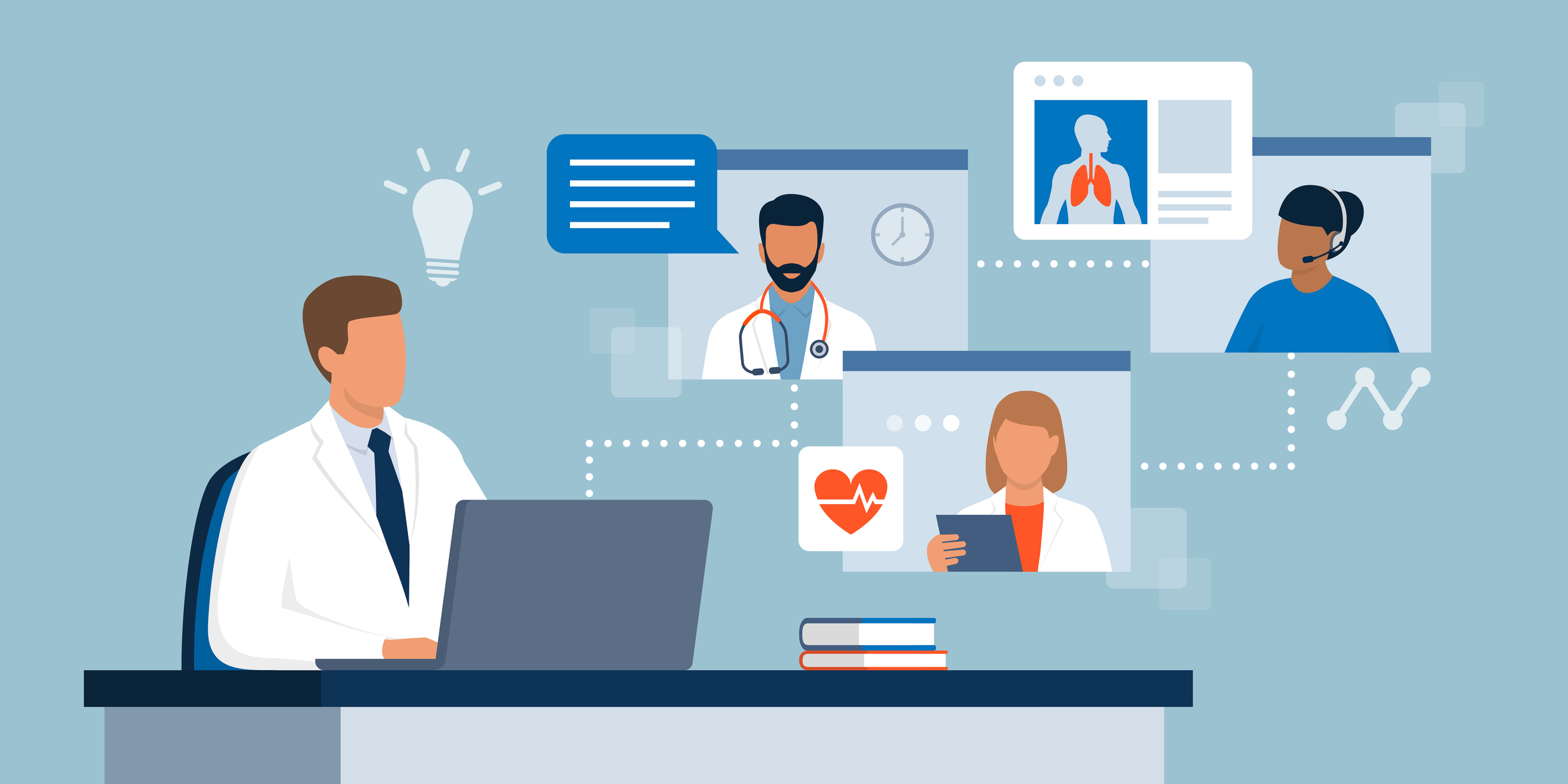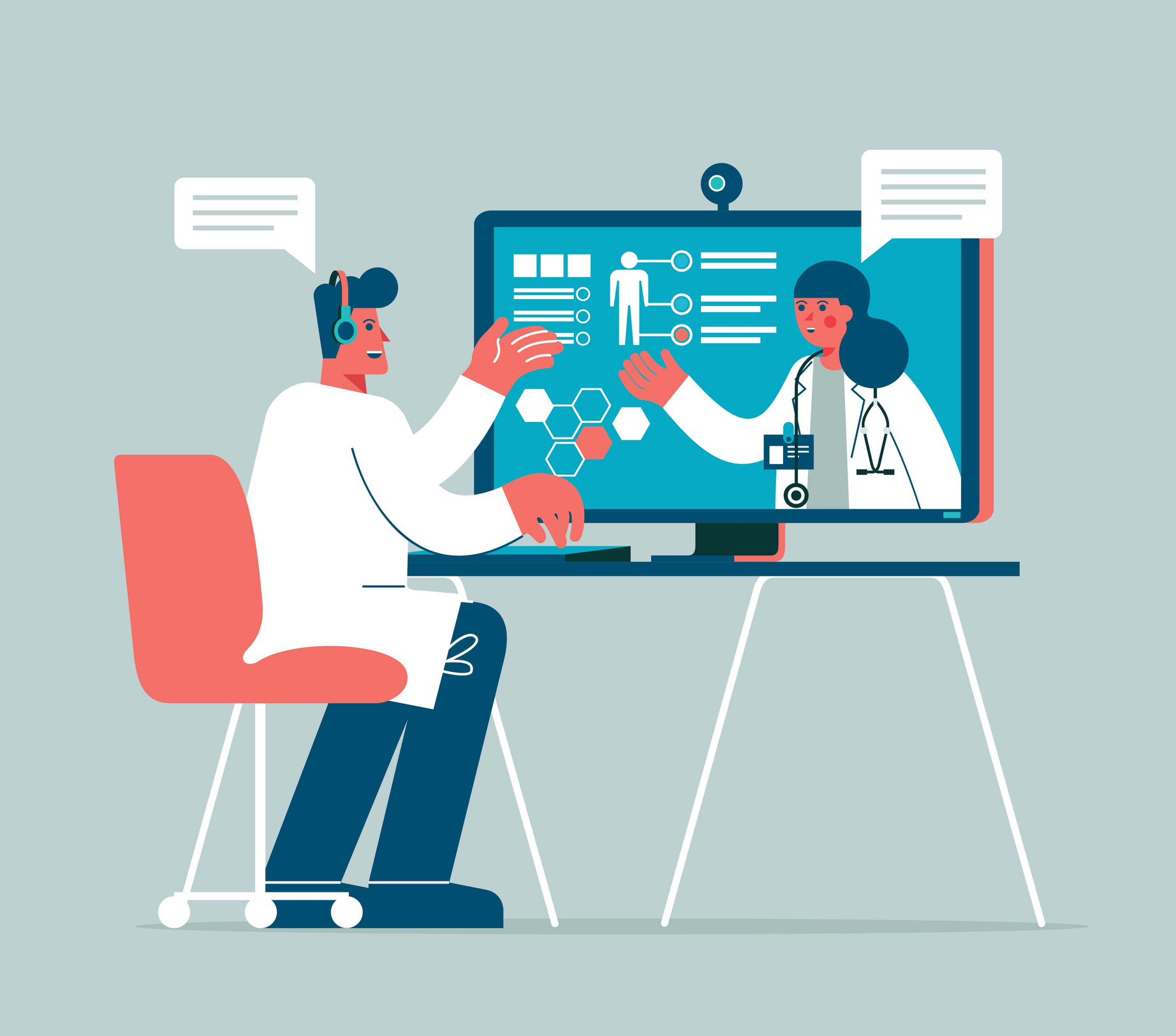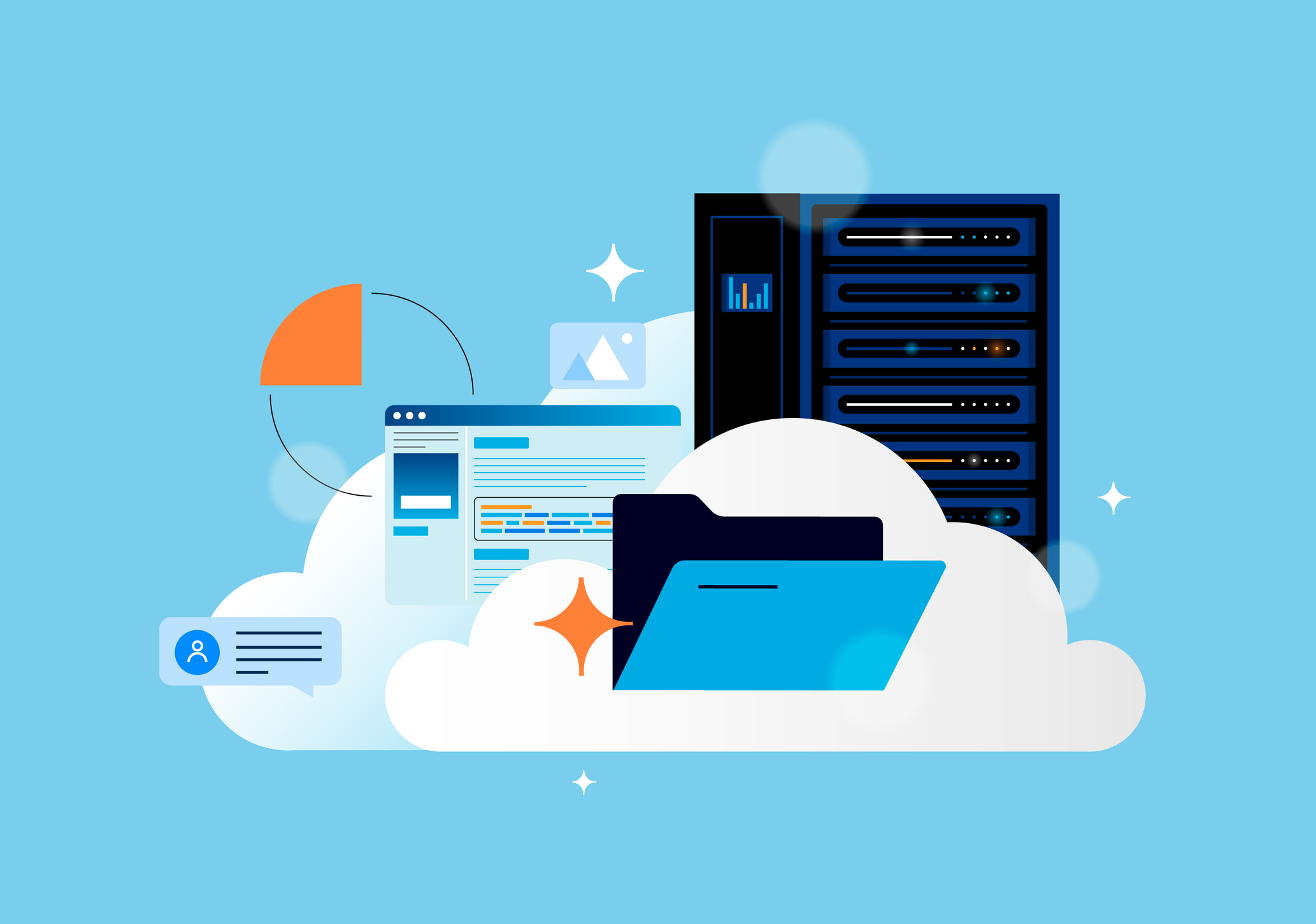The Top Trends in Healthcare Contact Centers to Watch in 2025
by Erina Suzuki | Published On September 24, 2024

Trends in healthcare contact centers are shifting. In the past, budget and resource restrictions left many companies struggling to deliver consistent, intuitive, and memorable experiences to patients. Now, evolving technology, compliance standards, and consumer expectations mean healthcare companies can no longer afford to overlook the importance of a well-designed contact center.
Studies show that 65% of patients now expect better customer service standards from healthcare agencies, and simple issues, like poor appointment scheduling and support practices, can contribute to over $150 billion in lost revenue each year.
To retain patient loyalty, minimize expenses, and improve performance, healthcare companies need to adapt to the emerging trends in the customer experience landscape. Here, we’ll review some of the most significant trends in healthcare contact centers, and how you can take advantage of them.

The Top Trends in Healthcare Contact Centers
Although the trends that have the biggest impact on your healthcare organization and contact center strategy may vary based on your approach to managing customer experiences, certain major trends are influencing virtually every medical organization.
Based on our knowledge of the contact center landscape, and our extensive work with healthcare leaders, here are the most significant trends you’ll need to prepare for.
1. The Rise of Personalized Omnichannel Experiences
Patients today don’t always want to communicate with healthcare professionals and clinics over the phone. Many prefer having access to a range of support options, including email, social media, live chat, and even video conferencing. When it comes to enabling various support channels, catering to patients’ preferences plays a crucial role in enhancing their experiences.
Crucially, however, it’s not enough to simply offer support on the right channels. Companies need to ensure all the solutions they use for communication are connected. A true omnichannel strategy, which aligns data between channels and even enables access to a CRM (Customer Relationship Management) system, allows agents to preserve context in conversations.
When agents can track the discussions they have with patients over multiple days and channels, they can deliver more hyper-personalized and engaging experiences. Plus, since an omnichannel solution provides a holistic view of the patient journey, it can help businesses to uncover insights that help them to optimize future experiences, reducing call handling times, and improving customer satisfaction rates.
2. The Adoption of Artificial Intelligence and Automation
Healthcare organizations of all sizes are already using AI and automation to help enhance diagnostic processes, accelerate drug discovery, and boost team productivity. In the contact center, these technologies offer an incredible opportunity to optimize employee performance and patient experiences.
Studies show that automation has the potential to increase productivity by up to 40% in any organization. In the healthcare landscape, companies can use automation in the contact center to improve data management, streamlining the capture and processing of patient details. Team members can automate routine tasks like transcribing call recordings, giving them more time to focus on supporting patients.
Automation can even help reduce the risk of appointment no-shows for healthcare companies. With solutions like ComputerTalk iceAlert, teams can automatically send appointment reminders and updates to patients, boosting engagement and reducing appointment no-shows.
AI and automation, used together, can help healthcare organizations serve patients more effectively, with chatbots and virtual assistants that deliver 24/7 personalized support. Plus, AI tools can offer valuable insights into patient experiences and trends. They can analyze patient sentiment through their interactions with companies and deliver real-time guidance to agents to improve interactions.
AI solutions can even track call volumes and patterns, helping healthcare companies determine how to allocate their resources effectively.
3. The Shift to Cloud-Based and Scalable Solutions
One of the main reasons healthcare companies have struggled to keep up with contact center and customer experience trends in the past, is that their legacy systems make it difficult for them to upgrade and scale their solutions as needed. As customer expectations evolve, organizations are rapidly seeing the benefits of switching to a cloud-based contact center as a service (CCaaS) solution.
CCaaS offers healthcare companies a cost-effective way to access cutting-edge features and omnichannel contact center capabilities at scale. It ensures companies can implement new technology upgrades with ease, without having to rip and replace existing technologies.
Additionally, cloud-based solutions ensure healthcare businesses can adapt to changing trends in the workplace, such as the rise of remote and hybrid workers. With a cloud-based solution, businesses can overcome staff shortages, accessing talent from around the globe.
Plus, flexible cloud-based solutions can integrate with a range of other essential business tools. You can easily align your contact cetner from workforce management apps and CRM systems. Alternatively, you can link your CCaaS platform to a collaboration tool like Microsoft Teams.
4. The Integration of Telehealth and Remote Monitoring
Demand for telehealth solutions has been increasing at a record pace since the pandemic. By 2032, the global telehealth market is expected to be worth more than $791.04 billion, as patients look for more convenient ways to access health services and support.
Embracing telehealth and remote monitoring solutions gives medical companies a unique way to improve patient care. For instance, with a contact center integrated with a solution like Microsoft Teams, doctors and physicians can host face-to-face interactions with patients over video, increasing accessibility to appointments for people who might struggle to visit clinics in person.
The rise of IoT (Internet of Things) devices and wearable solutions, connected with contact center systems, will enable healthcare companies to collect real-time data about patients, allowing for remote diagnosis and treatment. At the same time, these solutions will help healthcare organizations gather data they can use to understand healthcare trends and track disease progression in various regions and sectors.
5. Rising Focus on Data Security and Compliance
The importance of data security and compliance is nothing new in the healthcare space. For years, companies have struggled to find ways of delivering consistent, personalized service, while adhering to strict mandates like HIPAA and PIPEDA. Some healthcare-adjacent companies, such as insurance providers, also have additional regulations to consider, such as PCI compliance, when managing transactions.
The influx of new communication channels and AI solutions affecting trends in healthcare contact centers will force companies to consistently adapt their security and compliance strategies. Business leaders will need to find ways to keep up with new regulations using real-time monitoring, analytics, and robust data governance strategies.
Additionally, organizations will need to take a comprehensive approach to ensuring the right security standards are implemented throughout their organization. This will mean thinking carefully about everything from data storage strategies to patient authentication methods and encryption.

Adapting to the Top Trends in Healthcare Contact Centers
The emerging trends in healthcare contact centers do present some challenges for companies, forcing organizations to rethink their technology stacks and processes. However, adapting to these trends also offers business leaders an opportunity to improve patient experience, differentiate themselves from the competition, and minimize compliance risks.
Here are the best ways companies can adapt to the latest trends in the healthcare industry.
1. Migrate to the Cloud
Ultimately, moving your contact center and other crucial technologies, such as your unified communications strategy, into the cloud is one of the best ways to ensure your organization can continue to scale and adapt to new healthcare trends.
Transitioning to the cloud gives healthcare organizations an opportunity to access agile, scalable services they can adapt according to their needs. What’s more, a cloud-based solution can be deployed and customized faster, with fewer upfront costs, placing less strain on a healthcare brand’s limited resources.
With a contact center in the cloud, business leaders will be able to reduce costs, minimize downtime and service disruptions, and embrace new technologies as they arise. With solutions like ice Contact Center from Computer Talk, healthcare companies can create a customized cloud-based solution, specific to their needs, and even integrate their existing telephony platform with their contact center system.
ComputerTalk can help businesses migrate to the cloud faster and embrace all the benefits of a robust contact center system, enabling omnichannel interactions, access to AI and automation, and more.
2. Invest in a True Omnichannel Experience
As mentioned above, to deliver consistent, intuitive, and personalized experiences at scale, companies need a true omnichannel contact center, that connects and aligns data and processes between channels. Embracing an omnichannel solution that syncs data and context across customer touchpoints and offers access to end-to-end customer journey insights will significantly improve patient satisfaction.
Studies show that businesses offering omnichannel service achieve around 23 times better customer satisfaction scores. When implementing your omnichannel strategy, start by evaluating your customer journey, determining which channels appeal most to your target audience.
Think carefully about digital options, such as social media, live chat, and video conferencing for telehealth capabilities, as well as self-service solutions like chatbots and voice assistants. Ensure the platform you choose can surface historical and real-time insights from every channel, giving you a holistic view of the customer journey.
3. Explore Diverse AI and Automation Solutions
AI and automation have the potential to reduce operational costs, boost efficiency, and improve patient experiences in healthcare contact centers. To unlock the full benefits of these technologies, companies should explore a range of solutions, such as:
- Intelligent IVR: Intelligent IVR systems with built-in speech recognition can improve the customer self-service experience by allowing customers to interact with menus using their voice. These tools can also help with routing customers to the correct agents based on insights into sentiment, requirements, and agent availability.
- Chatbots and virtual assistants: Chatbots and virtual assistants offer an opportunity to automate certain customer service tasks, such as booking appointments or answering common questions. They can also provide real-time assistance to agents, coaching them through the process of supporting a patient with their requests.
- Automated alerts: Automated alerts and notification systems can help to reduce the risk of appointment no-shows and keep customers informed with proactive messages about service changes or issues. Tools like ComputerTalk ice Alert help to optimize resource allocation in the healthcare landscape and improve patient satisfaction rates.
- AI analytical tools: AI analytical tools, such as conversation analytics platforms, can track customer sentiment, provide insights into trending contact center topics, and more. They can help healthcare businesses understand their patients, prepare for spikes in call volume with predictive insights, and allocate resources effectively.
4. Prepare for the Future of Telehealth
As demand for telehealth solutions continues to grow, companies will need to invest in a combination of technologies to empower teams and delight patients. The first step is integrating your unified communication and contact center technologies.
Aligning contact center systems with unified communication tools like Microsoft Teams means that remote healthcare experts and customer service providers can easily connect, share knowledge, and work together on delivering exceptional patient experiences.
Integrating these platforms with other solutions, such as CRM tools, will also help businesses empower agents and employees with the right data to personalize patient experiences at scale. Plus, integrations with workforce management tools will ensure companies can keep track of their human resources and plan for changes in patient demand more effectively.
Secondly, embracing cutting-edge tools, such as IoT devices and wearables, that can connect with your data platforms and contact center systems ensures your teams will be able to track patient health data in real time, allowing for remote diagnosis, treatment, and patient care.
5. Rethink Security Strategies
Finally, to adapt to evolving security and compliance standards, businesses will need to rethink how they’re managing their data in the healthcare contact center. Using a cloud-based omnichannel contact center system integrated with the other tools employees use to serve patients will help to give you more control over how you collect and store patient information. This will be crucial to adhering to HIPAA mandates for storing and protecting data.
However, you’ll also need to think about things like compliant recording applications for capturing and archiving omnichannel conversations, and PCI-compliant payment processing solutions. Working with a contact center leader that offers a robust range of tools for security and compliance will help you to navigate the changing regulatory landscape.
For instance, ComputerTalk’s contact center solutions support end-to-end encryption, as well as offering tools that allow companies to monitor conversations in real time and track compliance risks. Companies can use powerful recording and transcription tools to collect conversations for auditing purposes and even automatically redact sensitive information from certain documents.
Plus, they can implement their own end-to-end security strategies, leveraging everything from multi-factor authentication to secure payment processing applications.
Stay Ahead of the Trends in Healthcare Contact Centers
Contact centers in the healthcare industry continue to evolve, thanks to changing patient expectations, transformative technology, and new regulatory standards. To ensure they can adapt to customer preferences, optimize their workforce, and reduce risks, healthcare companies need the right blend of technologies and best practice guidelines.
ComputerTalk’s innovative range of solutions for healthcare contact centers - such as ice Alert for automated notifications, the ice Contact Center for omnichannel communication, and a wide range of AI bots, analytical tools, and monitoring systems - empower healthcare organizations to evolve.
Contact ComputerTalk to learn how we can help you adapt to today’s healthcare contact center trends and deliver better experiences to your patients.
More from our blog
 Explore the benefits of cloud-based call center solutions, from cost savings to AI-driven automation. Learn how scalable, secure, and flexible cloud platforms enhance customer service and streamline operations.
Explore the benefits of cloud-based call center solutions, from cost savings to AI-driven automation. Learn how scalable, secure, and flexible cloud platforms enhance customer service and streamline operations.
 I joined ComputerTalk during peak-pandemic times- when banana bread was a national pastime and Zoom backgrounds were judged harder than actual office decor. My job? Marketing! Specifically, lots of copywriting. Thought leadership blogs. Punchy taglines. And optimizing content so it...
I joined ComputerTalk during peak-pandemic times- when banana bread was a national pastime and Zoom backgrounds were judged harder than actual office decor. My job? Marketing! Specifically, lots of copywriting. Thought leadership blogs. Punchy taglines. And optimizing content so it...
 Interactive voice response (IVR) systems can help automate your call center and provide customers with self-service options.
Interactive voice response (IVR) systems can help automate your call center and provide customers with self-service options.

